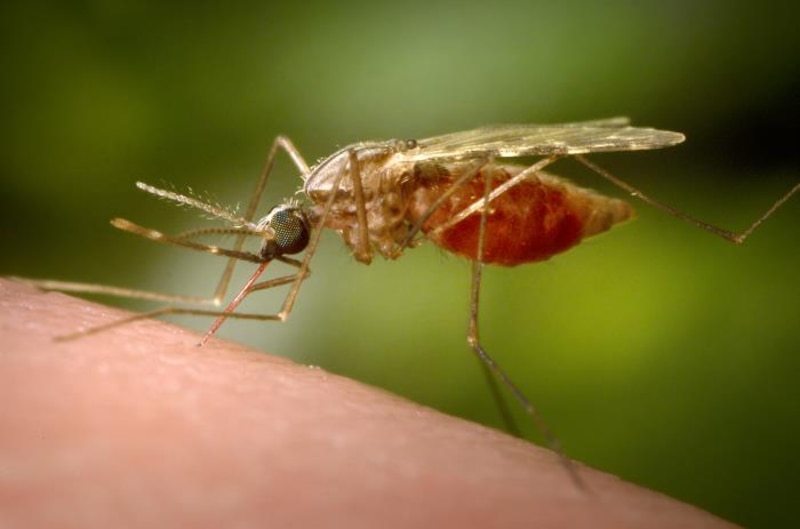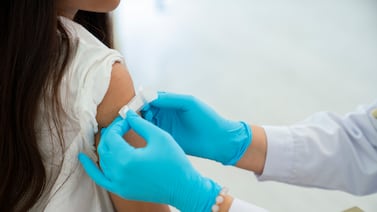Public health, explained: Sign up to receive Healthbeat’s free national newsletter here.
When public health investigators received a report this summer about a woman hospitalized with malaria who lived east of Tacoma, Wash., the case didn’t seem unusual.
Even though malaria was officially eliminated from the United States decades ago, every year about 2,000 people travel to places where the disease is common and bring it back with them.
All it takes is a bite from an infected mosquito to inject the malaria parasites into the skin.
So when the Tacoma-Pierce County Health Department received an official notifiable disease report on Aug. 4 about the woman’s malaria diagnosis, it triggered a routine investigation.
In the beginning it was just another of the 20-70 malaria cases reported in Washington state each year, and among the thousands of reports for a wide array of other diseases and conditions that health departments across the state track and investigate.
“The vast majority of people who are diagnosed with malaria in the United States have traveled to a malaria endemic setting,” Dr. James Miller, the department’s health officer, told Healthbeat. “By the time they’re diagnosed, they’re back in the U.S.”
It usually takes seven to 30 days from the time the person is infected until they start getting sick with fever, chills, sweating and other flu-like symptoms. Without quick treatment, the infection can become life-threatening.

Each person whose malaria case is reported to the department gets interviewed by public health staff.
The department’s health investigators expected to learn that the woman had traveled to one of more than 80 countries where malaria infections routinely occur. Worldwide, there were about 263 million new malaria cases in 2013, according to the World Health Organization, and about two-thirds of them occurred in about a dozen African countries.
Yet the woman in Washington state hadn’t traveled anywhere she could have become infected.
“That’s what made this case unusual,” Miller said.
Reports of locally acquired malaria are rare in the U.S.
It raised the question: Could the Pierce County woman have somehow become infected with malaria in the local community?
That seemed implausible. There had never been a case of locally acquired malaria documented in Washington state, he said.
While rare, there had been sporadic reports of local infections in other parts of the United States over the years.
In 2023, health departments in Florida, Maryland, Texas, and Arkansas identified 10 people whose malaria infections were attributed to mosquito bites in those four states. Before this unusual series of small malaria outbreaks, it had been 20 years since a locally acquired malaria case had been identified in the United States.
So Miller was skeptical that a local mosquito bite was how the woman in Pierce County, Wash., had been infected.
“Initially I thought we’ll probably find some other explanation here,” he said.
Before joining the local health department, Miller had been a regional medical officer for the state’s health department, and he had also served as an epidemic intelligence officer – a disease detective – for the Centers for Disease Control and Prevention.
Often in public health investigations, he said, additional interviews and other probing will result in an explanation that makes sense. “So I think that was my first thought, that we would find another explanation,” he said.
After consulting with zoonotic disease specialists at the Washington State Department of Health and additional experts in the CDC’s malaria branch, Miller and his team started digging deeper.
“The first step was to do a more detailed Interview with the patient and their family,” he said. “Not just recent international travel, but exploring their lifetime international travel history, also looking at recent domestic travel, looking at things like outdoor activities, as well as any other potential sources of infection.”
There can be rare scenarios where people can become infected with malaria without a mosquito being involved, Miller said.
Could the woman have been infected with malaria through a transfusion, despite precautions blood banks take to prevent that from happening? Or could she have been exposed to malaria-contaminated blood through unsterilized medical equipment or perhaps by getting a tattoo in unsterile conditions?
“Again, very rare, but obviously local transmission of malaria is also rare. So we explore all the possibilities,” Miller said.
“There are rare cases where someone can have traveled to a malaria-endemic setting years prior and then not develop malaria until later,” he said. “But in this case, we didn’t identify any relevant travel for the patient, even in the more distant past.”
Investigators also didn’t identify any medical procedures or other potential blood exposures that could explain her infection.
Miller said his skepticism about a local mosquito causing the infection faded after the team’s in-depth interview with the patient and her family.
“Even though it seems very unlikely, we have to really be thinking that this could be transmission within Washington,” Miller said.
Investigators went from skeptical to warning the public
On Aug. 6, the department put out a press release alerting the public that they were investigating a possible locally acquired case of malaria.
The most likely cause of the woman’s infection, the release said, was a local mosquito biting someone who was infected with a travel-associated case of malaria, then spreading the infection to the Pierce County woman.

The department emphasized that the risk to the public was “very low,” that malaria does not spread directly from person to person, and that the best way to protect against malaria was to prevent mosquito bites and to talk with a health care provider about taking anti-malaria medications if traveling to countries where the disease is more common.
An alert also was sent to the area’s health care providers to be on the lookout for malaria infections, even in people who had not traveled abroad. “Without a relevant travel history, people wouldn’t be suspecting malaria in a place like Washington,” Miller said.
Meanwhile, the Tacoma-Pierce County public health team worked with the state health department and CDC to examine recent emergency department data. The records were analyzed looking for people with possible malaria symptoms who may not have been diagnosed with the disease in the recent past and going forward. No additional malaria cases were identified, Miller said.
Mosquitoes were trapped at the patient’s house and at other nearby locations.
Investigators wanted to determine whether the specific type of mosquito that’s capable of spreading malaria – the Anopheles mosquito – was present in the area. Some Anopheles mosquitoes were captured, but testing showed none of these individual mosquitoes was infected with the malaria parasite, Miller said.
The local health investigators went back and reviewed the cases of other people in the county who had been diagnosed recently with travel-related malaria infections, just to see if there was anything that was overlooked in those earlier investigations, Miller said.
They also went back to the Pierce County woman’s family and took a closer look at their travel and illness histories, in case one of them had been an initial malaria case.
But neither of these efforts produced additional clues, Miller said.
In labs at the CDC, scientists did molecular testing on samples of the malaria parasites that infected the Pierce County woman, then compared the findings with the genetic makeup of the parasites involved in the county’s other recent travel-related malaria cases.
These lab results indicated parasites in the county’s recent malaria cases weren’t similar enough to suggest any connection, Miller said.
“So where that leaves us is that in the absence of any other explanation, we think the most likely scenario is that this person did acquire a mosquito bite either here in Pierce County or potentially in a neighboring county,” Miller said.
The investigation’s findings suggest that this Pierce County woman is the state’s first known locally acquired malaria infection.
But there is no way to know exactly how her infection occurred.
One possibility, Miller said, is that a mosquito with malaria could have somehow been brought into the United States, perhaps on a plane.
The CDC’s testing of the malaria parasites that infected the woman indicate that they are most likely from sub-Saharan Africa, Miller said.
Another possibility, he said, is that there may have been a person in the area who had malaria, but their infection didn’t receive medical attention, and therefore wasn’t reported to public health officials. Miller noted that people who have lived in areas where malaria infections are common can have some level of immunity and may have a less severe case of the disease.
“And then a mosquito would have had to bite that person and then bite the person with locally acquired malaria,” Miller said.
But there is no way to know for sure. “We don’t have any confirmation or ability to say for sure about any of those scenarios,” he said.
Miller said the rapid investigation of this malaria case highlights the way the nation’s public health system should work, with local, state and federal agencies, sharing resources and expertise.
“In this situation, fortunately, the patient recovered. We didn’t identify any other cases. But of course, you don’t know that at the beginning of an investigation,” Miller said. “So it’s important to have a public health system that’s ready to ramp up quickly and to work together effectively to do an investigation.”
Alison Young is Healthbeat’s senior national reporter. You can reach her at ayoung@healthbeat.org or through the messaging app Signal at alisonyoungreports.48







